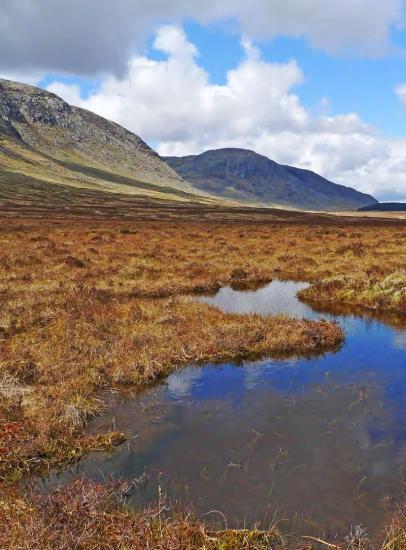
This site uses cookies, by continuing to use this site you accept the terms of our privacy policy
Feed 2.0 Loading...
New Research Shows Scottish Public Supports Investments To Restore Peatlands
19th May 2017

New research has found that the general public is supportive of ambitious plans by the Scottish Government to restore Scotland's peatlands - which benefits water quality, wildlife and carbon storage.
The large scale national survey was led by a team of researchers at Scotland’s Rural College (SRUC), the James Hutton Institute and the University of Leeds.
A summary of the newly published findings shows a majority of respondents agreeing that restoration will benefit them and future generations - and consider peatland restoration to be a good use of public money.
Respondents also recognised the importance of peatlands as an important component of Scottish landscape and identity.
The findings support ambitious targets announced this January by the Scottish Government to restore the country’s peatlands in its Draft Climate Change Plan.
The plan proposes restoration of a total of 310,000 hectares of peatlands over the next 15 years, and supports this aim with £8 million available to land managers for restoration grants in 2017/18 through the Peatland Action Programme.
Andrew McBride, Scottish Natural Heritage’s Peatland Action Manager, said: "Understanding the link between our peatlands and people is paramount to the role peatlands have in our society and their management. This report has helped shape my thinking on the importance of having strong public support and the complexity of that support."
Experts emphasise that restoring or preserving peatlands in good ecological condition can help to reduce Scotland’s contribution to climate change. Healthy peatlands act as a carbon sink, and can provide additional benefits to people through their role in regulating water quality and flows and in sustaining a unique flora and fauna.
Currently, the majority of Scottish peatlands are degraded to some degree. In most cases, degradation is associated with historic land use that involved drainage of peatlands. Degraded peatlands store less carbon or, if degradation is more severe, even become a source of carbon to the atmosphere, therefore contributing to climate change.
The research team conducted a survey to better understand the Scottish citizens’ views about peatland restoration. Most of the participants were supportive of restoration, even if that implied a cost to the tax payer. The study found that annual benefits to the Scottish society associated with peatland restoration in terms of carbon storage, water quality and wildlife habitat can range from £130 to £420 per hectare and year, depending on the degree of restoration and where it takes place.
Dr Klaus Glenk of SRUC, who co-authored the report, said: “These numbers suggest that previous investment into restoration of Scottish peatlands through the Peatland Action Programme was generally worthwhile for society.
“Together with additional information on views regarding restoration, they also suggest that the ambitious restoration targets of the Scottish Government to restore up to 20,000 hectares of peatland each year are likely to be socially desirable.”
However, Dr Glenk emphasizes that more needs to be understood about the opportunities and challenges for land owners to implement changes, and the benefits to society arising from up-scaling restoration efforts.
Further research by the team, recently published in the journal Biological Conservation, indicates that many people have mixed feelings about peatlands which are seen as remote and inaccessible ‘wastelands’ - while at the same time they are appreciated as valuable nature that provides wide open spaces and is an essential part of Scotland’s cultural and natural heritage.
The researchers believe that it is crucial that restoration initiatives address this variation in views by providing appropriate and sufficient information about peatlands and their restoration that the public can understand and relate to, and that land owners can draw on. The research also showed that it is important to involve local communities in decision-making and listen to their concerns and values.
Dr Julia Martin-Ortega of the University of Leeds, co-author of the study, added: “We’re pleased to see that the Draft Climate Change Plan explicitly refers to the relevance of raising awareness. There are a number of web resources that already provide useful information to the interested citizen or land manager.
“As part of our research, we have developed easy to understand online communication tools that provide ‘easy access’ to peatland restoration for those interested.”


